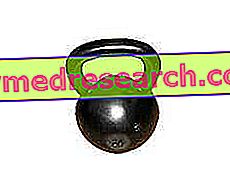Body Constitution
Being a region almost devoid of fat and muscle tissue, the circumference of the wrist provides useful information on the individual's body structure and morphology.
| Wrist circumference | ||
| Morphological type | man | woman |
brevilinei | > 20 cm | > 18 cm |
normolinei | 16 - 20 cm | 14 - 18 cm |
long-limbed | <16 cm | <14 cm |
For a more precise evaluation, the following equation is used

and compares the data obtained with the references listed in the table.
| TYPES OF CONSTITUTION | ||
| Constitution | Men | Women |
limbed | more than 10.4 | more than 10.9 |
Normolinea | 9.6 - 10.4 | 9.9 - 10.9 |
brevilineo | less than 9.6 | less than 9.9 |
How to measure the circumference of the wrist?

The subject is standing, with the forearm flexed at right angles and with the palm of the hand facing upwards; the muscles are relaxed.
The operator is in front of the subject and places the metric tape immediately below the styloid processes of the radius and ulna (as shown in the figure) without excessively compressing the soft tissues.
NB: use a flexible but inelastic metric cord.
Wrist circumference and ideal weight
The circumference of the wrist is used, together with the height, for a precise calculation of the ideal weight.
Lanzola's formula, for example, uses the height, sex and circumference of the wrist to provide an estimate of an individual's weight:
Men :
- wrist> 20 cm => Weight = 75 x height (m) - 58.5
- wrist 16-20 cm => Weight = 75 x height (m) - 63.5
- wrist Weight = 75 x height (m) - 69.0
Women
- wrist> 18cm => Weight = 68 x height (m) - 51.5
- wrist 14-18 cm => Weight = 68 x height (m) - 58.0
- wrist Weight = 68 x height (m) - 61.0
Below is the automatic calculation form
According to recent scientific studies, the circumference of the wrist could somehow predict the cardiovascular risk of an individual; in particular, some epidemiological studies have shown that a wrist circumference higher than normal causes an increase in cardiovascular risk and develop type II diabetes mellitus and insulin resistance (even in children).



